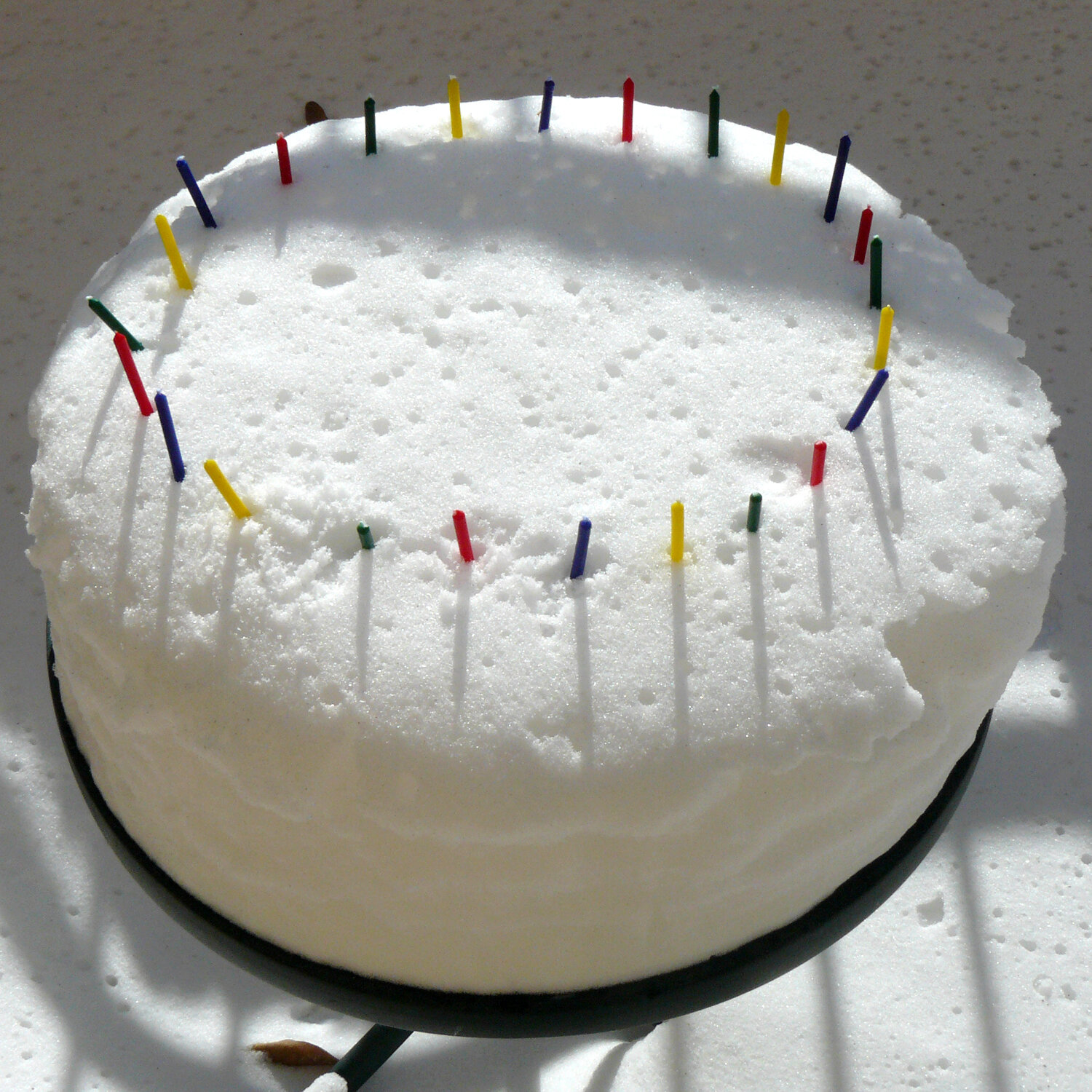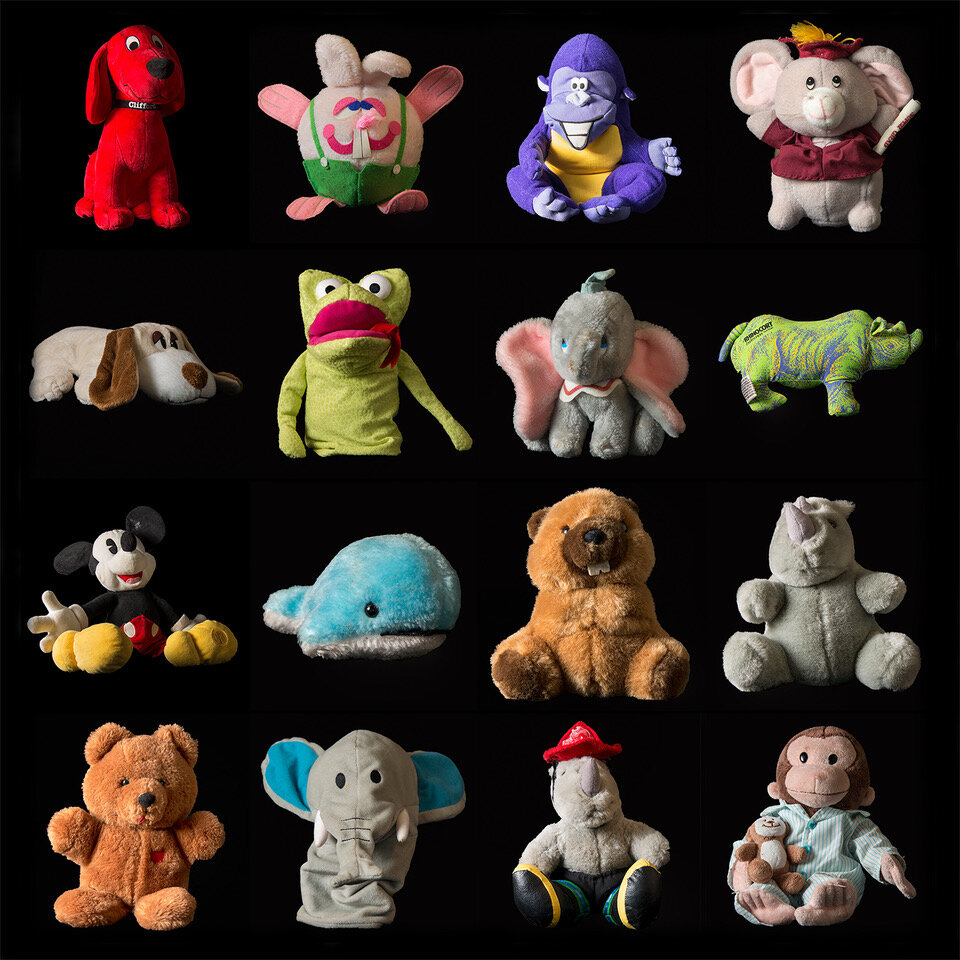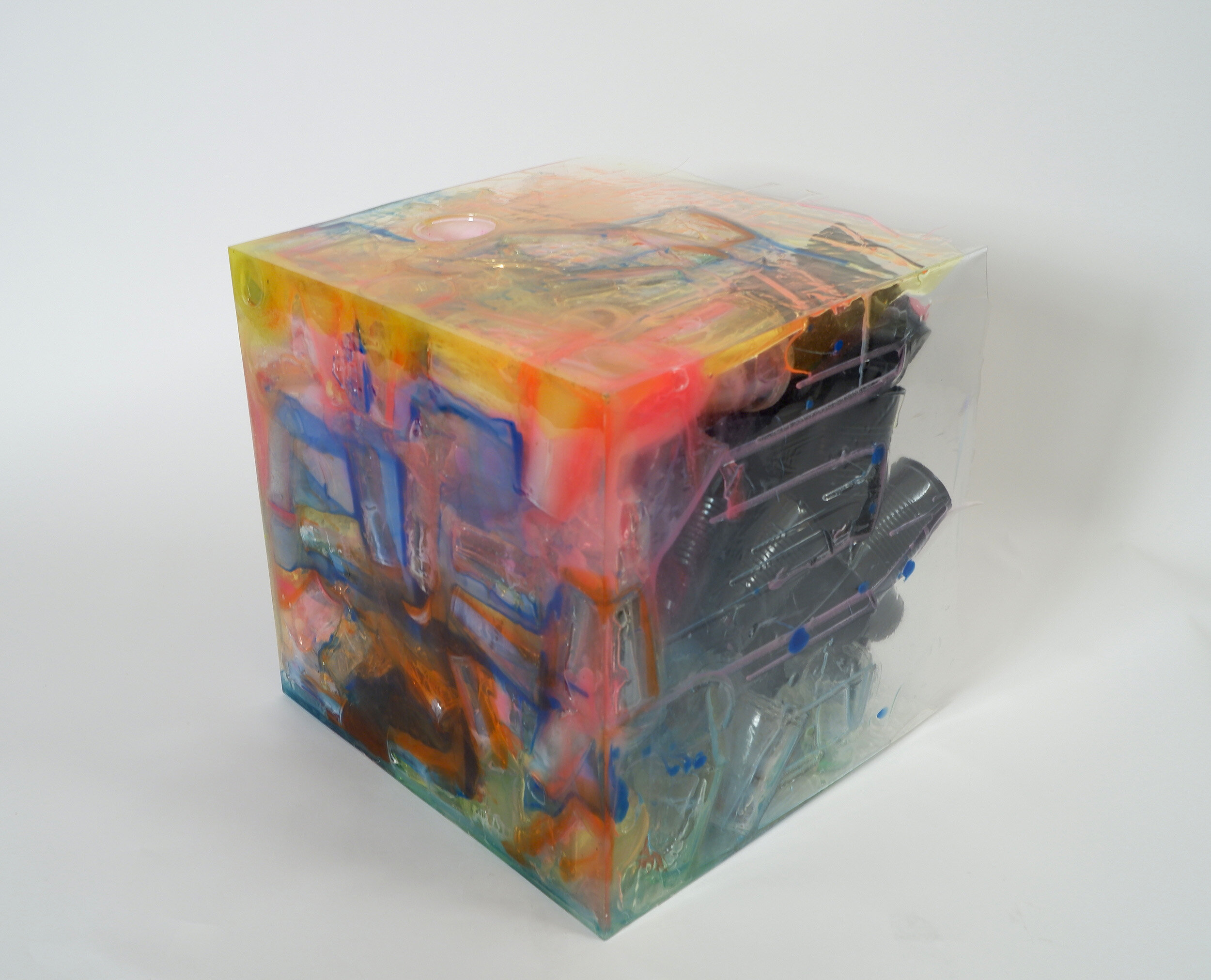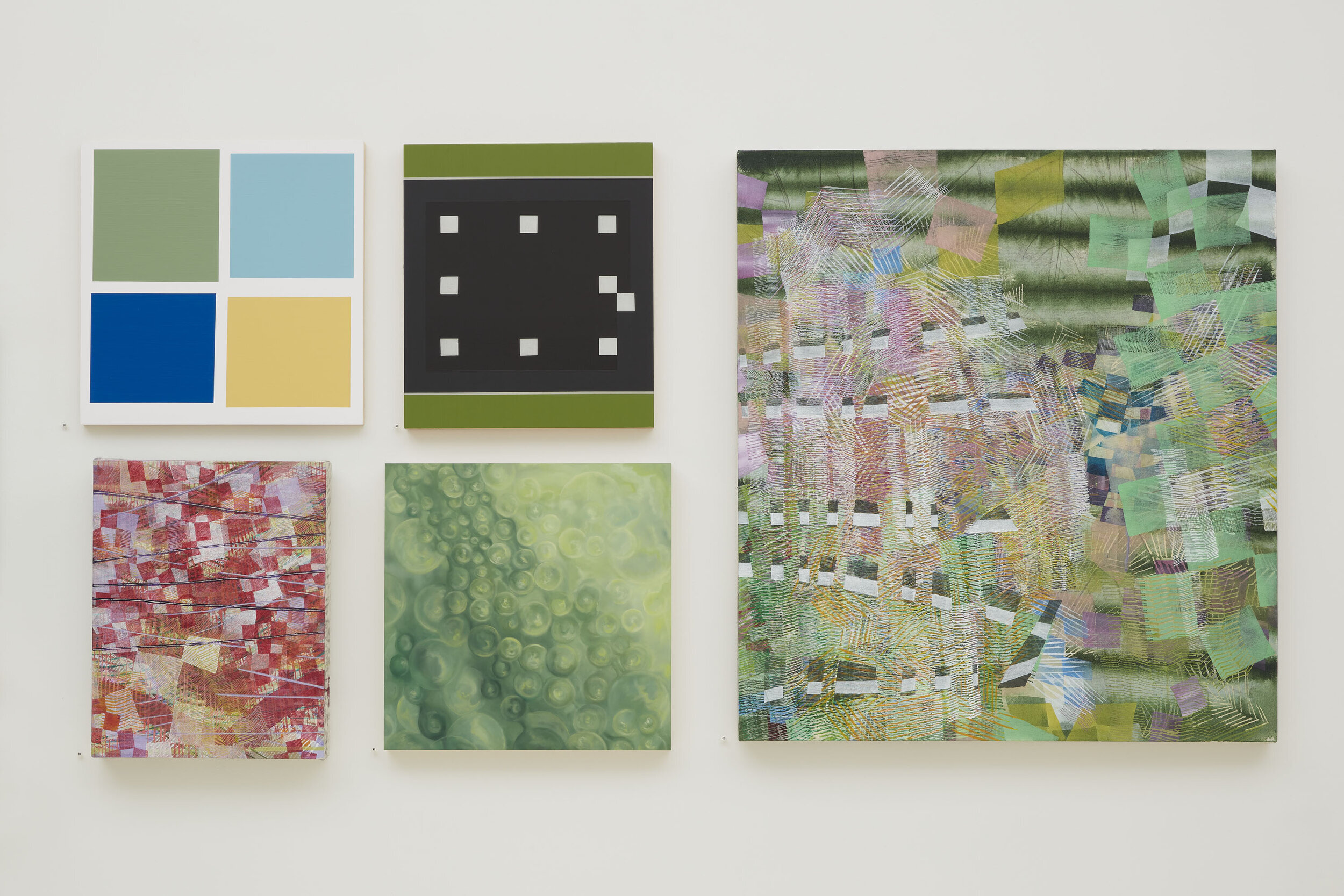Circles & Squares, the 2019 summer group exhibition at RWFA, is now open through August 9th. This year, the fourth annual invitational exhibition at the gallery explores the theme of these basic forms within painting, photography, sculpture, video and works on paper. The 41 participating artists range in age from their 20s to their 70s, the majority of which are women artists, and many showing with the gallery for the first time. We welcome the return of several artists who were included in the previous two guest curated summer shows: Norma Markley and Tom McGlynn, from Carolanna Parlato’s electric TREMOLOfrom 2017, and Cat Balco, Ben Godward and Jason Rohlf, chosen by independent curator Tracy McKenna, for her luscious GET LOOSE exhibitionfrom last summer.
The show’s Circles & Squares title is inspired by gallery artist Donna Ruff, whose cut newspaper works comprising The Migrant Seriespay homage to the sacred geometry of Moorish design. Based on the combined visual building blocks of circles and squares, the geometric designs result in patterns of repeated forms. Ms. Ruff is represented here by a burn drawing on chine-collé with gold leaf.
Other works on paper include Oriane Stender’s ink and beeswax on book pages; Linn Meyer’s obsessive, near psychedelic ink on graph paper drawings; Johnny Adimando’s Moon Maiden, a unique etching and intaglio process print from a series of dreamlike meditations; Hannah Schutzengel’s intimately composed mixed media paper squares; Rhea Karam’s XV, 2018, a mixed media serigraph from a series of photo-based perspective blending color blocks.
The effect of repeated forms continues around the space. Circles and squares are explored and highlighted aesthetically from both the micro to the macro scale. Andrew Schwartz’s Impressionspaintings zoom into small circular patterns dotting across color washes, as if the paintings are touched by the artist’s fingerprints. Mary Shah delves even further into a seemingly micro scale, exploring undulating waves of organic circular forms in her painting Gnossienne No. 1, named after the composition by French composer Erik Satie. Eung Ho Park expands upon the theme of repeated small circles in his 3D mixed media resin and bottle cap wall sculpture, I Am Looking At You. In a bright playful wordplay take on circles, Norma Markley presents her piece Oops, the title is embroidered across a bright blue towel and emphasis is given to the “O” in the word as it is scaled larger and spirals in on itself, a drunk italic.
Going small in a square-shaped way, Alyse Rosner captures tumbling patterns of small repeated squares dancing across her graphite and acrylic paintings on raw canvas surfaces, echoing nature. Don Voisine’s painting, Antechamber, toys with the very idea of “square,” echoing small squares inside a larger black one, giving the feeling of being inside a puzzle or game of Tetris.
Tom McGlynn’s formalist paintings focus on the essential form, contrasting grids of four squares in different colors in order to create unresolvable tiny tensions between them. Jeff Wallace turns his square canvas on a corner, in an homage to Piet Mondrian’s Lozengepaintings. Across his painting, Tableau I: Lozenge with Four Lines and Grayhe is working with deconstructed antiquarian books, collaging layers of pages and cover fabrics in a subtly changing neutral color pattern.
Employing both circles and squares in his compositions, artist Ian Mack’s Residue series presents circular globs of textured oil paint, contrasting colors and shapes of the painterly remains from the bottoms of used paint cans, they are automatic paintings existing from observation. Christopher Colville’s gunpowder generated gelatin silver prints from his series Ouroborospicture the shadows of a curved serrated blade mimicking the ancient symbol of a snake eating its own tail, a practically complete circle representing infinite regeneration. His Serpentis an undulating wavy line that arches in circular shapes, meandering through the center of the arranged squares. Karen Schifano’s painting of two cream circles within a black field, titled White Threat, works with circles and more directly makes them infinite spaces of set dimensions. It is a calm contrast compositionally.
Jason Rohlf’s Eclipsepaintings present the eponymous astronomical event using an experimental mix of mediums - acrylic, ink and roof tar transfer on muslin shop rags, creating a unique take on patterns of squares and circles intersecting. Lynn Dunham’s Mono Eclipse print counters the eclipse subject nicely, as her colors glowing and pulsing against one another. Similarly themed, Molly Lamb’s print Untitled (Eclipse), takes a white china with floral patterning tea cup, set starkly against an inky, pitch black, background and in a twist of the photographic idiom, uses it as the canvas for a camera obscura’s recording of an eclipse in the glossy surface of the porcelain.
Pushing the sense of exploring rectangular boundaries, Carolanna Parlota’s acrylic paintings fill the square canvases with bold, bright swaths of color pools and drips. Ben Godward’s square resin cube titled Olduvai Gorgeous pops with bright, saturated colors and links back nicely within the space to Parlota’s color fields. Shea Slemmer’s The Tide Changed One Minute Ago painting alsoriffs nicely off Parlota’s works, similarly filling the square shape with color fields, but in a soft, more ethereal way. Sandi Haber Fifield’s mixed media triptych drawings on small wood squares give an organic feel to the square shape. They are landscapes of ribbons of color softly swirling through and linking the shapes.
Several unlikely “portraits” are presented within the theme of circles and squares. Amy Fell’s oil on canvas, Diner Phone, 2018, is a personification of an anachronistic pay phone, painted in realistic detail and contrasted against a muted, retro wallpaper design. Willie Osterman’s tintype, Masking Portrait #146, uses the metallic object, to exploit the shape of a mysterious human face, with cylinders protruding from the surface. Bjørn Sterri’s silver print, Jens Linus, Garachico, is an abstracted portrait of his son’s head and shoulders transparently layered across a tranquil seascape. His son’s graceful head sits in slight vignetting, a subtle reminder that lenses create circular images and it’s only the camera’s masking that decides the shape of the image. Allison L. Wade’s silver print Untitled (breast implant photogram)presentsthe image of the implant , ironically fully exposing the makings of an often censured subject. Michael Kenna’s Brooklyn Bridge, Study 2, print is a nightscape portrait of the iconic landmark, angled as if it’s dipping slowing from a moonlight sky into the water below. Sharon Harper’s print collage titled Some Observations on Movements of the Earth 2014 - Desert Wash Natural Bridges, Utah, No. 1, shows circular cutouts in the color of the print below, giving the effect of a close-up zoom of a strange landscape.
When discussing the use of the square in photography, it is inevitably a qualifier (as in “square format”), and no photographer is more associated with that than Diane Arbus. The intrinsic democracy of equal length in sides, absolves visual tension, creating the perfect stage for Arbus’ pointed human dramas. Her Puerto Rican Woman with Beauty Mark, is a Modern day Medusa, a Greek myth carved from silver salts, and starring an Everywoman found in Arbus’ street wanderings.
Both Ellen Cantor and Elisa Decker employ the square as they bemusedly take inventory of oddities that grabbed their attention; a collection of stuffed animals for the former, and birthday candles adorning a (circular) birthday cake made from snow for the latter. Yola Monakhov Stockton’s nod to the avant-garde experimentation of The New Vision in one of her works from the slyly titled series, Post-Photography, shows a constellation of circular shapes, floating in space, the result of her sending pinhole cameras loaded with sensitized paper through the postal system, the created patterns recalling early Bauhaus photographic experiments. This trust in alternative image processing is wildly rewarded in Jerry Spagnoli’s riveting daguerreotype that captures a myriad of angles of light and the main source of it all – the Sun – in the highly polished mirror of the revived 19thcentury plate.
Kate Joyce was one of seven photographers who participated in a documentary project photographing the minor league baseball team, the Durham Bulls, to celebrate the 25th anniversary of the Kevin Costner film, Bull Durham. Joyce’s study of a TV monitor in a press box hints at the omnipresence of the media in our culture. The black and white screen image is an anachronism, but sets off the painterly marks of color that magically speaks to the paintings and sculpture around it in the exhibition.
Photographs shot in square format suddenly echo the colors and forms in paintings, prints and works on paper nearby. Circular sculptural elements link across the room, reflecting back the forms found in nearby 2D works; zigzagging details drawing the viewer to more closely examine the content within the forms. The exhibition is diverse and densely installed, but reverberates with the inevitable relationships formed by works drawn from the same language.
Featuring:
Johnny ADIMANDO, Diane ARBUS, Cat BALCO, Ellen CANTOR, Christopher COLVILLE, Elisa DECKER, Lynn DUNHAM, Amy FELL, Ben GODWARD, Sandi HABER FIFIELD, Sharon HARPER, Kate JOYCE, Rhea KARAM, Michael KENNA, Molly LAMB, Ian MACK, Norma MARKLEY, Lilly MCELROY, Tom MCGLYNN, Linn MEYERS, Ima MFON, Yola MONAKHOV-STOCKTON, Willie OSTERMAN, Eung Ho PARK, Carolanna PARLATO, Jason ROHLF, Alyse ROSNER, Donna RUFF, Karen SCHIFANO, Hannah SCHUTZENGEL, Andrew SCHWARTZ, Mary SHAH, Shea SLEMMER, Jerry SPAGNOLI, Oriane STENDER, Bjørn STERRI, Don VOISINE, Allison L. WADE, Jeff WALLACE, Tenesh WEBBER, Cassandra ZAMPINI
Exhibited Works
Eung HO PARK
I Am Looking At You: Spinning, 2010
Oil, acrylic, epoxy resin and bottlecaps
14 x 14 x 3 inches (35.6 x 35.6 x 7.6 cm)
Oriane STENDER
Untitled Page Drawing (p. 282 & 283), 2014
Ink and beeswax on book pages
12 x 10 1/2 inches (30.5 x 26.7 cm) Framed
Norma MARKLEY
Oops, 2002
Embroidery on towel
8 x 8 inches (20.3 x 20.3 cm)
Cat BALCO
Dark Wheel, 2018
Acrylic on canvas
72 x 72 inches (182.9 x 182.9 cm)
Oriane STENDER
Untitled Page Drawing (Circles), 2016
Ink and beeswax on book pages
23 1/4 x 34 1/2 inches (59.1 x 87.6 cm) Framed
Tenesh WEBBER
Bracket, 2019
Unique black and white silver gelatin print mounted on 4 ply museum board
20 x 20 inches (50.8 x 50.8 cm)
Christopher COLVILLE
Ouroboros 13, 2018
Unique gunpowder generated gelatin silver print
24 x 20 inches (61 x 50.8 cm) Framed
Christopher COLVILLE
Untitled (Serpent) 2018
Unique gunpowder generated gelatin silver print collage
44 x 92 inches (111.8 x 233.7 cm) Image Framed
Elisa DECKER
Birthday on My Perch, 2018
Archival pigment print
16 x 20 inches (40.6 x 50.8 cm) Framed
Cassandra ZAMPINI
Data Stream, 2019
Video, 31 minutes
Carolanna PARLATO
Double Dealing, 2019
Acrylic and medium on canvas
48 x 48 inches (121.9 x 121.9 cm)
Amy FELL
Diner Phone, 2018
Oil on canvas
24 x 18 inches (61 x 45.7 cm) Framed
Don VOISNE
Antechamber, 2018
Oil on panel
16 x 14 inches (40.6 x 35.6 cm)
Jason ROHLF
Eclipse #1, 2017
Acrylic, ink and roof tar transfer on muslin shop rag
21 x 21 inches (53.3 x 53.3 cm) Framed
Jason ROHLF
Eclipse #7, 2017
Acrylic, ink and roof tar transfer on muslin shop rag
21 x 21 inches (53.3 x 53.3 cm) Framed
Jason ROHLF
Eclipse #9 2017
Acrylic, ink and roof tar transfer on muslin shop rag
21 x 21 inches (53.3 x 53.3 cm) Framed
Ellen CANTOR
Stuffed Animals I Gave Away, 2017
Archival pigment print
17 x 17 inches (43.2 x 43.2 cm) Framed
Letting Go/Holding Back, Edition 1 of 10
Tenesh WEBBER
End Point, 2019
Unique black and white silver gelatin print mounted on 4 ply museum board
20 x 20 inches (50.8 x 50.8 cm)
Installation Views



























































